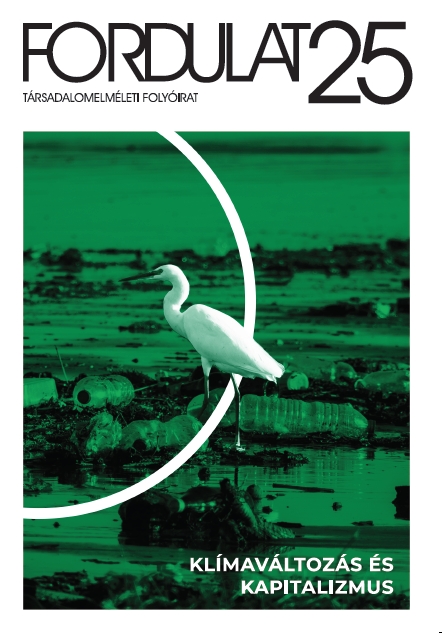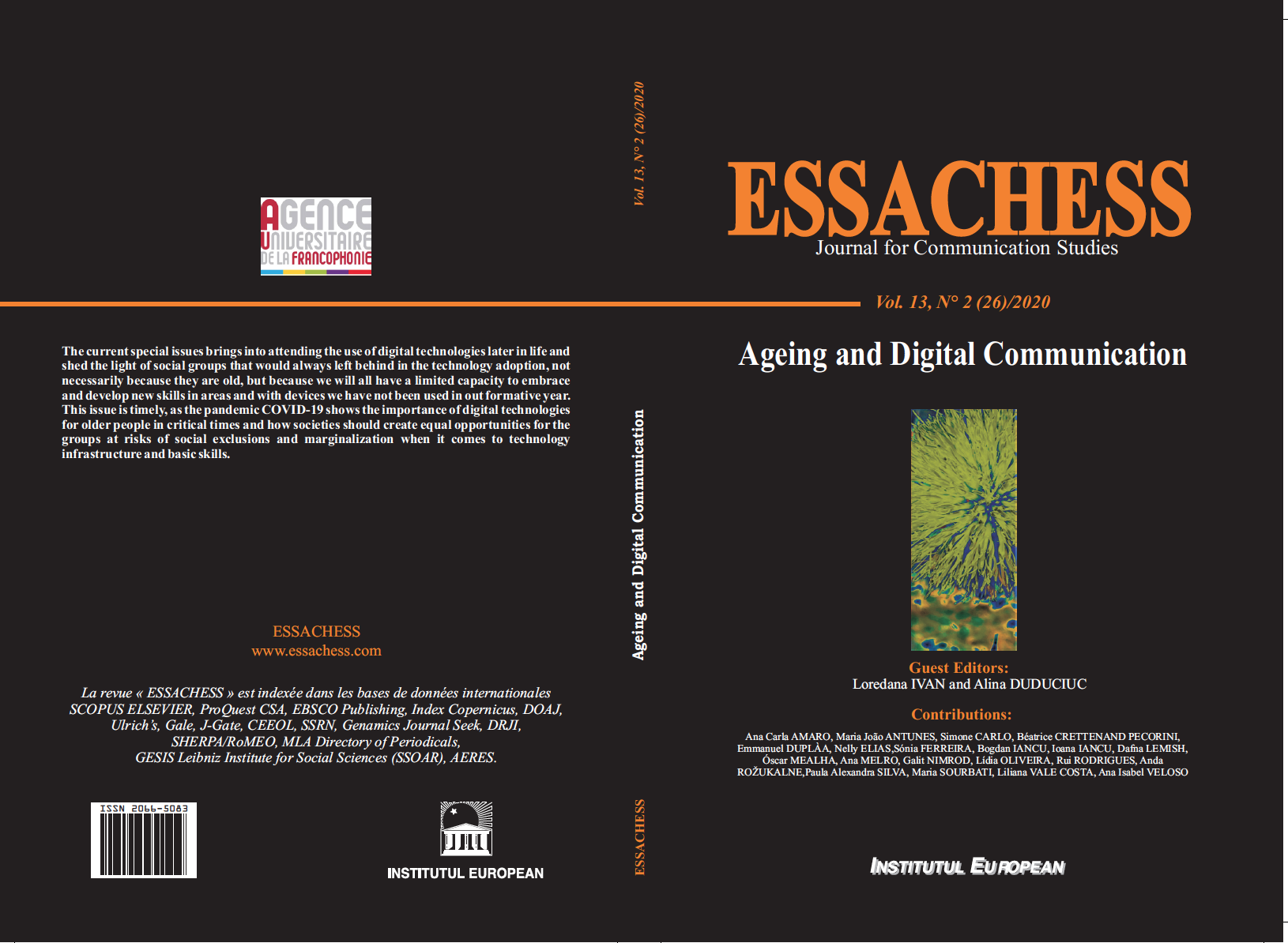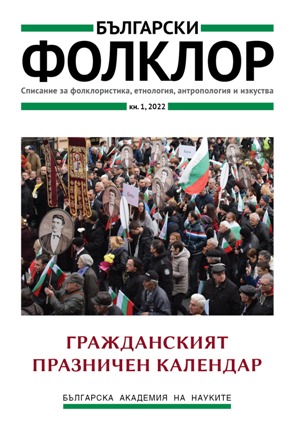
We kindly inform you that, as long as the subject affiliation of our 300.000+ articles is in progress, you might get unsufficient or no results on your third level or second level search. In this case, please broaden your search criteria.


The article is part of a series of observations related to the problem of the identity construction of the Easteauropean emigrants/immigrants “in the West” (Europe andUSA) before and after the “democratic changes”. Here, the author examines the first case (the second one is published in the second volume of the thematic issue “The Road”) which is based on materials from Estonia. The article shows the specifics of the Estonian labour mobility to Scandinavia in the context of the identification “main stays” developed by the Estonian society and related to the so-called popular religion and the neo-paganism which form a “working” national narrative.The article is based on the fieldwork of the author, published sources and Internet materials.
More...
Rebecca Solnit has published her book "A Paradise Built in Hell" ten years ago. Its main idea was originally formulated in 2005 in an essay published on the day when Hurricane Katrina reached New Orleans. Rebecca Solnit is writer, historian and activist living in San Francisco; she has been working in various environmental, anti-war, human and women's rights movements since the 1980s. She has published 17 books so far and is a regular author of Guardian and Harpers' Magazine. In her works she continues the tradition of American progressive public intelligentsia: although she relies on historical facts and social science research, she primarily outlines perspectives to expand sociological imagination (Mills 1959) on challenges that cannot be solved by the social knowledge produced within the current social order.
More...
Based on online surveys conducted in the United States and Israel, this study explored grandmothers’ involvement in mediation of their grandchildren’s digital media use. Study participants were highly involved in restrictive, instructive and supervising mediation—and to a much lesser degree in co-use and technological mediation. Their involvement was significantly associated with their familiarity with digital media popular among children, engagement in other activities with their grandchildren, and past mediation (as mothers). Results highlighted the technical challenges older women face in their efforts to mediate their grandchildren’s digital media use.
More...
Ontario’s action plan for seniors recognizes that seniors have health and education needs, among other needs (Gouvernement de l’Ontario, 2017). To partially meet these needs, we have proposed an innovative gerontagogical approach by combining two existing concepts: narrative gerontology with digital storytelling. Thus, by this new concept of Digital Narrative Gerontology, we give seniors a special place for the elaboration of the message they wish to bequeath to other generations, by creating together their life testimonies in digital form easy to share, while mutually acquiring new digital skills and exploiting the benefits of narrative gerontology, such as well-being, aging well, resilience and wisdom, but also informal and intergenerational learning. Communication was important on two levels: between the elder and the researcher during the oral narration and the creation of the digital narration in a relationship of mutual trust as well as in the form of digital testimony with a key message to transmit, during the broadcast of the digital narration. This research also made it possible to respond to the curiosity of the elders for new matters in a reassuring framework, adapted to their level, while respecting their learning pace and the choices of knowledge that they wish to acquire. Seniors were proud to share their digital creation with those they had chosen, thus opening the space for discussions, exchanges, emotions and the open door to a new intergenerational “narrative” and social interactions - sources of learning.
More...
ociety is ageing at an unprecedented pace. In tandem, the number of technology-enabled solutions targeted at older adults continues to rise. It is therefore important to understand how to best communicate these solutions to seniors and facilitate use and adoption. To develop an understanding of what could be an improved strategy of communication and media content delivery for companies that provide older adults with technology-based solutions is the goal of this research. Aware of the potential stereotypes that may emerge towards the ageing population, this paper takes a special interest on ageism and gender to determine imbalances. With this in mind, this paper conducts an in-depth case study of the online presence of a company that developed a digital product for seniors that has been nominated for a Prize on Best Practice on Active and Healthy Ageing. Findings concerning the communication strategy of the company are extracted based on the analysis of their website and their five social media profiles. In total 120 posts were inspected, containing 120 text excerpts, 352 pictures, and 21 videos. Results show that the organisation sustains a continuous engagement with both seniors and the seniors’ organisations that use their product, privileging a relationship of close proximity. The representation of older adults is one that shows exceptionally happy and active seniors, who are surrounded by an aura of admiration. There seem to be no considerable differences with regards to gender.
More...
This paper presents the results of a systematic review of the literature (SRL) in the field of Participatory Design (PD), undertaken under the scope of LOCUS – Playful Connected Rural Territories. The project employs an ethnographically, participatory and agile approach to the process of co-designing, developing and evaluating an IoT system to support playful intergenerational engagement in exploring cultural heritage of Portuguese rural territories, by engaging inhabitants, stakeholders and visitors. The SRL aimed to understand how older adults have been integrated and engaged into technology PD teams and processes. This paper focus on the most used methodological approaches and participation methods, along with the challenges in integrating older adults and the strategies to overcome them, which are discussed in the light of project aims.
More...
Academic interests on the impact of media on individuals’ lives often highlight differences in knowledge across generations. The spread of disinformation and its potential impact on societies has added a new dimension to this process - the need to continuously improve media and information literacy (MIL). Thus, the older generations face greater challenges, as they need to acquire new skills more rapidly and on a larger scale. This article analyses interrelations between encouragement measures (implemented by media policy makers) and media literacy perception of middle-aged and older population in Latvia (aged 55 to 75). The research employs data of two national representative surveys (May 2019, 1017 respondents; August 2019, 1005 respondents) that include data on respondents’ perception of MIL and test their media literacy skills. The theoretical background of this paper is supported by literature that discusses age and generations in context of media and technology use (Aroldo, 2014), and the Ideological model of literacy (Street, 1984; 1994). Data shows that a higher proportion of middle-aged and older respondents, compared to other age groups, are not interested in MIL issues and evaluate their MIL competences as rather low, but in the everyday practice their ability to recognize and evaluate information is equivalent to that of other age groups.
More...
Election campaigns in the age of social media are rapidly changing their character. Due to the declining party loyalty of voters, once stable constituencies have become increasingly volatile and the importance of campaigning has increased. Parties are now thought to be more likely than in the past to opt for negative campaigning. This paper examines the postings that parties or top candidates made on the social media sites Facebook and Twitter during the 2019 National Council election campaign. The results suggest that - at least on social media sites - the cost-benefit analysis of the parties might turn towards negative campaigning, as the average popularity of negative campaigning posts was higher than those that were not tagged with negative campaigning.
More...
The holiday is an essential element in the ideological regulation of public life; it plays an important role in shaping and stabilizing the group celebrating it, in all cases by actualizing the most important unifying values, and very often – by distinguishing examples of exemplary behaviour. The spread of the COVID-19 epidemic at the very beginning of 2020 leads to a number of radical changes in social life. The speed with which processes develop, as well as the search for new forms to continue established practices, leads to experimentation with the possibilities of new technologies, as well as of new conditions – education in an online environment, online shopping, outsourced commercial cash registers for outdoor service, limiting the capacity for public access, reducing programs, etc. Limiting physical access to official celebrations provoked an attempt to compensate for it by broadcasting the festive ceremonies live. However, the transfer of an event to an online environment places local communities in the passive role of spectators of a performance, without the opportunity of participation, and the social function of the celebration is reduced to the possibilities of the social network to communicate through texts and chat with other representatives of the community who observe the broadcast. These restrictions seem to compromise the very idea of a celebration and make visible the fact that its fundamental feature is the possibility of physical presence and participation of citizens.
More...
We analyze Russia’s communication strategies in the period leading up to and following the seizure (2014-2018) of the Crimean Peninsula in the Spanish editions of its digital platforms, Sputnik and Russia Times. Drawing from theories of political communication, we show how Russia used storytelling and framing to build an international image and political brand consistent with, and try to justify, its foreign policy actions. Specifically, Russian messages transmit no room for doubt about the legality of any of its strategies in Crimea. We argue that this communication strategy is consistent with the concept of ‘sharp power’ to describe Russian projection in the world. Cultural and emotional appeals designed to generate positive emotions about Russia, i.e., ‘soft power’, were far less common. In recent years, Russian projection of sharp power appears to have increased in the Spanish-speaking world, particularly in South America. In addition to helping explain Russian foreign policy, our findings contribute to broader debates about political branding and truth in a ‘post-truth’, multipolar world.
More...
Book Review: Ана Вукмановић. У трагању за извир водом. Слике воде у јужнословенској усменој лирици. Београд: Академска књига, 2020. 296 стр. ISBN 978-86-6263-301-9
More...
This article aims to outline the main sociocultural aspects of menstruation in Bulgarian traditional culture and folklore. Menarche rituals and etiological legends about the womb’s creation and the menstruation are explored and analyzed in order to define folklore motifs and beliefs. The woman and her cyclicity is related to fertility in the human world. Both in legends and in menarche rituals, the womb and the menstruation are essential for arranging and preserving the dimension between order and chaos, for building a connection between heaven and earth. The magical power of woman's blood and body is included in the cultural system of the human world, but it also aims to achieve prosperity on other levels. This sacred and mysterious physiological process gives woman a special place, makes her wiser and more responsible for the common good.
More...
I explore the connections between a particular place that was created by a natural agent (the Yantra River) and an artificial object (the ‘buna’), and the activities by which local people gave the place a specific character. I highlight their past actions and experiences; remembering, recounting and evaluations in the present; the emotional attachment to the place and the ecological nostalgia after its ‘loss’ due to hydro technical intervention.
More...
The article examines the funeral and memorial rites in the village of Breznitsa, Gocedelchev region. The specific local manifestations of the practices studied are presented in comparison with those of the other Muslim communities. Various elements of this rite are described both as prescriptions in the Koran and the Hadiths, and as the narrative tradition of the Bulgarian Muslims. The analysis of the connections between written and oral traditions shows the presence of an untransformed, ancient layer which continues to exist in parallel with the precepts of traditional Sunni Islam, characteristic of Ottoman culture. The field data used is gathered by the author in the period 2021–2023.
More...
The article traces the processes of development and renewal of instrumental folk music through the practice of three representatives of Limanovi family playing zurna. They are from the village of Debren, Garmen municipality. The father Isuf Bayryamov Limanov (1944–2020) is a performer who masters the old instrumental musical tradition of Gotsedelchev region and passes his skills on to his son Isuf Limanov (1966). Initially, due to the banning of zurna music in the 1980s, he began his clarinet studies, but subsequently established himself as one of the brightest performers mastering the Gocedelchev zurna virtuoso. The grandson Vaidin Limanov (1989) preserves and develops the family tradition through the most modern technologies of keyboard electronic instruments, that have entered the folklore performance. In the art of different generations of musicians, traditions go through processes of rethinking, changing and living their new being.
More...
The article is based on the results of a nationally representative sociological survey conducted in 2021 within the project “National and European Dimensions of the Contemporary Identity of Bulgarians” (KP06-H50/6/30.11.2020), funded by the Bulgarian National Science Fund. The transformations in the identity of Bulgarian citizens are traced in today’s world of increased mobility, migration and communication with representatives of other ethnicities and nations, which changes the meaning of national borders, eliminates the closedness of national cultures and leads to the formation of a consciousness of supranational or European identity. The analysis of the ongoing processes in the contemporary identity of Bulgarian citizens is based on the understanding of identity as a social construct which has relational and situational/contextual structure, determined by the nature of interaction with “others” and changing over time. The results show that although at this stage the national identity is the leading and determining one in the self-identification of the Bulgarian citizens, the processes of formation of the supranational/European identity have begun and represents an important part of their self-identification. Over 50% of all Bulgarian citizens have consciousness of belonging to supranational structures, i.e., we can talk about processes of formation of supranational identity; and in 30% of them it is a question of a declared consciousness of belonging to Europe, including the identification as citizens of the European Union.
More...
As a result of the increasing number of Bulgarian-Armenian marriages in Bulgaria since the 1950s more and more people are born and grown up in such interethnic and intercultural settings. The main focus of this study is on respondents who are descendants of Bulgarian-Armenian marriages and the different identifications they construct in their mundane lives. The text will also pay attention to the interlocutors’ notions of homeland and their feeling of territorial identification from national and European perspectives.
More...